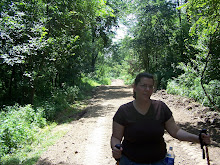
Banned Book Week is traditionally at the end of September (this year Sept 27-Oct 3) and I always make sure to read a banned book during that time. But when I was in the library this weekend and noticed a copy of And Tango Makes Three by Justin Richardson and Pete Parnell, I knew I had to pick it up. This book has become one of the most banned or challenged books ever in the few short years since it was published. Frankly, I wanted to see what all the fuss was about. Plus I love penguins.
The book, which is based on a true story, follows Roy and Silo a pair of male chinstrap penguins who bonded at the Central Park Zoo in New York. The two become a couple and spend years of their lives together. The keepers at the zoo noticed that the couple were attempting to hatch a rock they found. They clearly had the same parental urge that all that other penguins did. So when one of the other penguin couples produced two viable eggs, the keepers gave one to Roy and Silo to hatch. The two were loving and attentive parents and Tango was born. The three instantly became a family. The book leaves the story there. There has been considerable attention paid to the real penguins who have moved on since the book was published.
First and foremost I have to say that a book based on a true story probably shouldn't be challenged. It is not as if the authors made up two male penguins who decided to couple. This is what happened. The book tells the story in something of a documentary way. While the relationship between the penguins is anthropomorphized a little it is mostly just a true story about some unique animals. It felt a little more like a nonfiction book than a fictionalized one. I am curious about where the challenges are coming from. I did not see that as an attempt to convert children to homosexuality or even a book that focused heavily on the homosexual nature of the penguins. If nothing else I found this a cute story about an unlikely romance and wonderful parenting. Children would possibly have questions at the end of the story, depending on the age, but that could be a perfect time to open a discussion about differences.
The illustrations by Henry Cole are beautiful and soft. The focus is often on the two penguins but I was particularly taken with the illustration on the first pages of Central Park. I'll have to look to see what other books Cole has illustrated. The book is an enjoyable story and I found myself interested in learning a little more about the real-life penguins. I still say that any book that makes a child dig deeper into a subject is a good thing. Or perhaps this book is challenged because of the curiosity it arouses (sarcastic soapbox moment, yeah we don't want to promote curiosity in our kids. That would be bad). All in all I thought this was an enjoyable book that children would enjoy. I just don't see that much of an issue.
The book, which is based on a true story, follows Roy and Silo a pair of male chinstrap penguins who bonded at the Central Park Zoo in New York. The two become a couple and spend years of their lives together. The keepers at the zoo noticed that the couple were attempting to hatch a rock they found. They clearly had the same parental urge that all that other penguins did. So when one of the other penguin couples produced two viable eggs, the keepers gave one to Roy and Silo to hatch. The two were loving and attentive parents and Tango was born. The three instantly became a family. The book leaves the story there. There has been considerable attention paid to the real penguins who have moved on since the book was published.
First and foremost I have to say that a book based on a true story probably shouldn't be challenged. It is not as if the authors made up two male penguins who decided to couple. This is what happened. The book tells the story in something of a documentary way. While the relationship between the penguins is anthropomorphized a little it is mostly just a true story about some unique animals. It felt a little more like a nonfiction book than a fictionalized one. I am curious about where the challenges are coming from. I did not see that as an attempt to convert children to homosexuality or even a book that focused heavily on the homosexual nature of the penguins. If nothing else I found this a cute story about an unlikely romance and wonderful parenting. Children would possibly have questions at the end of the story, depending on the age, but that could be a perfect time to open a discussion about differences.
The illustrations by Henry Cole are beautiful and soft. The focus is often on the two penguins but I was particularly taken with the illustration on the first pages of Central Park. I'll have to look to see what other books Cole has illustrated. The book is an enjoyable story and I found myself interested in learning a little more about the real-life penguins. I still say that any book that makes a child dig deeper into a subject is a good thing. Or perhaps this book is challenged because of the curiosity it arouses (sarcastic soapbox moment, yeah we don't want to promote curiosity in our kids. That would be bad). All in all I thought this was an enjoyable book that children would enjoy. I just don't see that much of an issue.

No comments:
Post a Comment